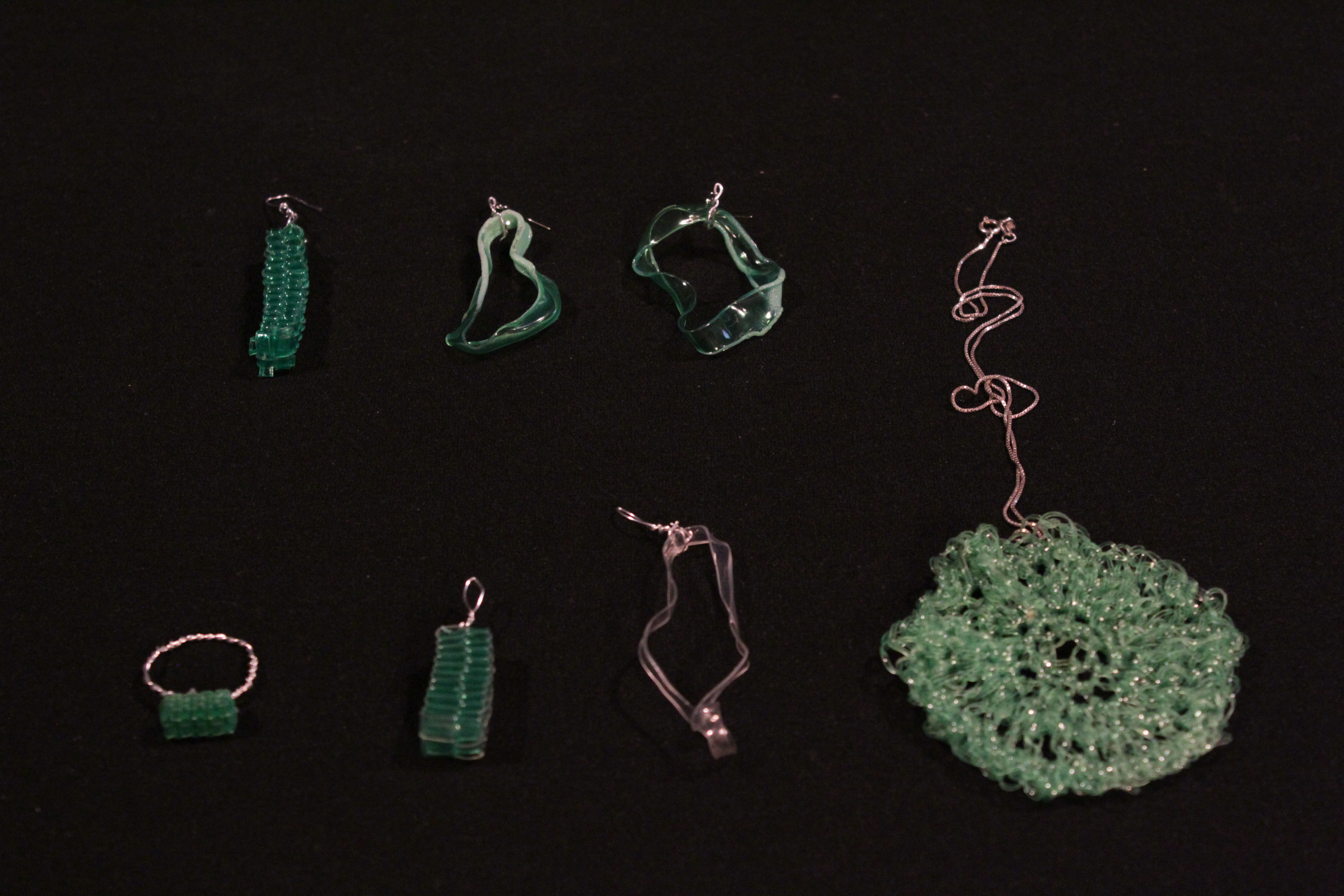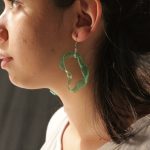Autor(es): Caroline Yamashita, Gabriela Matsuzaki, Iasmin Ogata, Taís Galvão Rosa
Categoria do Projeto: Reutilização, Garrafa PET, Tecido
Material(is) Utilizado(s): filetadores de PET, tear, garrafa PET, agulhas de tricô, soprador térmico
Descrição: Foram estudadas as possibilidades de transformação das garrafas PET em material têxtil. Optou-se por processos manuais e simples, de transformação do PET em fios de tecelagem. Para a tecelagem, foram escolhidas técnicas manuais – crochê, tricô, macramê e o kumihimo.
O primeiro passo do trabalho foi fabricar os filetadores de pet, utilizando madeira reaproveitada, lâmina de estilete, arruelas e parafusos. No quarto modelo, obteve-se fios finos e regulares. Foram utilizadas somente as partes retas das garrafas para filetagem e as pontas para carretéis.
Em seguida foram produzidos os teares, com madeira reaproveitada e parafusos, alterado para pregos no segundo modelo. Com estes teares foram feitos cordões trançados, com boa resistência, mas de difícil produção. Em seguida foi realizado o teste com teares industrializados. Com estes, foi estabelecido um maior ritmo de trabalho, produzindo peças delicadas.
O último tear testado foi o de kumihimo (técnica japonesa de trançado). A técnica mostrou potencial, mas não alcançou resultado satisfatório dentro do tempo do trabalho.
De todas as técnicas testadas (macramê, crochê e tricô), o tricô se sobressaiu, pois estabeleceu a melhor relação com o material.
Finalmente, foram feitos testes de aquecimento, utilizando o soprador térmico. O aquecimento do plástico o enrijece e reduz suas dimensões, alterando sua aparência
Como produtos finais, foram produzidos acessórios, um suporte de plantas e um cesto, evidenciando o potencial do material em ser transformado em diversos objetos.
[Texto fornecido pelos estudantes]
Abstract: We studied the possibilities of transforming PET bottles into textile material. We opted for simple and manual processes of transforming PET into weaving yarns. For weaving, manual techniques were chosen – crochet, knitting, macrame and kumihimo.
The first step of the work was to manufacture the pet threaders, with reused wood, stylus blade, washers and screws. In the fourth model, we were able to obtain uniform and thin threads. Only the straight parts of the bottles were used to make thread and the tips were used to make reels.
The looms were then produced, with reused wood and screws, changed for nails in the second model. With these looms were made braided cords, with good resistance, but difficult to make. Next, we tested industrialized looms. With these, the process was faster and produced more delicate pieces.
The last loom tested was kumihimo (Japanese braiding technique). The technique showed potential, but did not reach satisfactory results during the semester.
Of all the techniques tested (macramê, crochet and knitting), the knitting stood out because it established the best relation with the material.
Finally, heating tests were performed using the thermal blower. The heating of the plastic tightens it and reduces its dimensions, changing its appearance.
As final products, accessories, a plant hanger and a basket were produced, evidencing the potential of the material to be transformed into several objects.


















